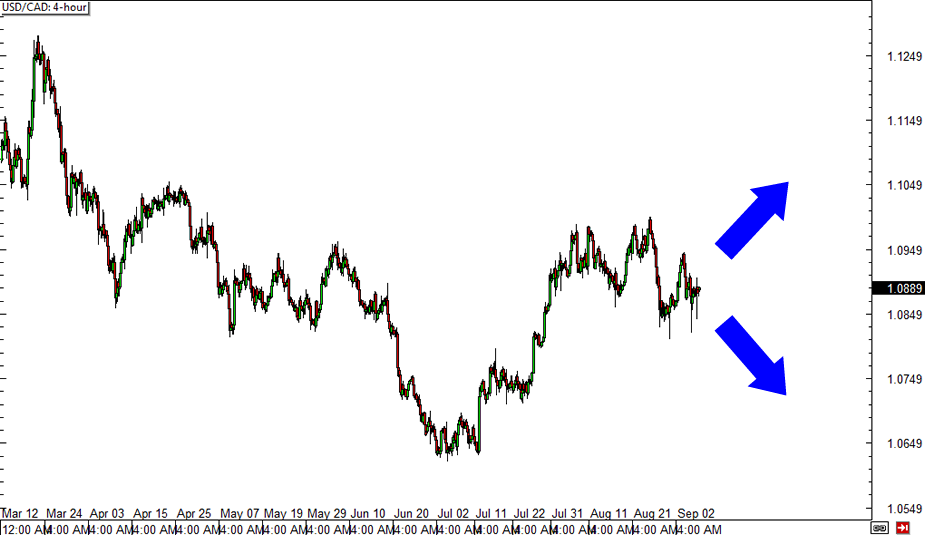U.S. August NFP: 142K vs. 226K
For the month of August, the U.S. economy added only 142K jobs – its lowest monthly hiring gain for the year. In addition, the previous NFP readings suffered downward revisions, indicating that jobs growth for June and July was weaker than initially reported. Despite that, the jobless rate managed to tick lower from 6.2% to 6.1% in August.On a brighter note, average hourly earnings climbed by 0.2% as expected, reflecting a little bit of wage growth for the month. Components of the employment report also showed some progress, as the underemployment rate improved from 12.2% to 12% while long-term unemployment also edged lower.
While the August jobs report wasn’t so bad after all, it also still isn’t good enough to push the Fed in a more hawkish direction. According to Fed official Eric Rosengren, there remains a significant excess capacity in the jobs market and that it would be appropriate to keep monetary policy unchanged until the economy moves closer to full employment.
Canadian employment change: -11K vs. 10.3K
In Canada, a decline in hiring to the tune of 11K was seen instead of the estimated 10.3K increase. Although the jobless rate managed to hold steady at 7.0% in August, a closer look at the figures reveals that this was spurred by a sharp decline in the participation rate. Apparently, 20.8K Canadians exited the labor force during the month, bringing the participation rate down to 66% – its lowest level since November 2001.Meanwhile, quarterly labor productivity jumped by 1.8%, marking a faster pace of increase compared to the estimated 0.1% gain and erasing the previous 0.1% decline. This marks its fastest quarterly growth since 1998!
While this sounds like good news, note that an increase in worker efficiency suggests that businesses don’t need to ramp up their hiring efforts or increase salaries just to boost productivity. For now, average hourly wages are up 2.3% on an annualized basis in August yet most economic analysts speculate that this increase will not be sustained given the surge in labor productivity.

USD/CAD 4-hour Forex Chart
To sum up, even though both the U.S. and Canada printed weaker than expected headline jobs figures last week, it appears that Uncle Sam is still doing much better than his North American neighbor. While it can be argued that improvements in the U.S. eventually carry over to the Canadian economy, it looks like the path of least resistance for USD/CAD is still to the upside. Do you agree?
Recommended Content
Editors’ Picks
AUD/USD could extend the recovery to 0.6500 and above

The enhanced risk appetite and the weakening of the Greenback enabled AUD/USD to build on the promising start to the week and trade closer to the key barrier at 0.6500 the figure ahead of key inflation figures in Australia.
EUR/USD now refocuses on the 200-day SMA

EUR/USD extended its positive momentum and rose above the 1.0700 yardstick, driven by the intense PMI-led retracement in the US Dollar as well as a prevailing risk-friendly environment in the FX universe.
Gold struggles around $2,325 despite broad US Dollar’s weakness

Gold reversed its direction and rose to the $2,320 area, erasing a large portion of its daily losses in the process. The benchmark 10-year US Treasury bond yield stays in the red below 4.6% following the weak US PMI data and supports XAU/USD.
Bitcoin price makes run for previous cycle highs as Morgan Stanley pushes BTC ETF exposure

Bitcoin (BTC) price strength continues to grow, three days after the fourth halving. Optimism continues to abound in the market as Bitcoiners envision a reclamation of previous cycle highs.
US versus the Eurozone: Inflation divergence causes monetary desynchronization

Historically there is a very close correlation between changes in US Treasury yields and German Bund yields. This is relevant at the current juncture, considering that the recent hawkish twist in the tone of the Federal Reserve might continue to push US long-term interest rates higher and put upward pressure on bond yields in the Eurozone.